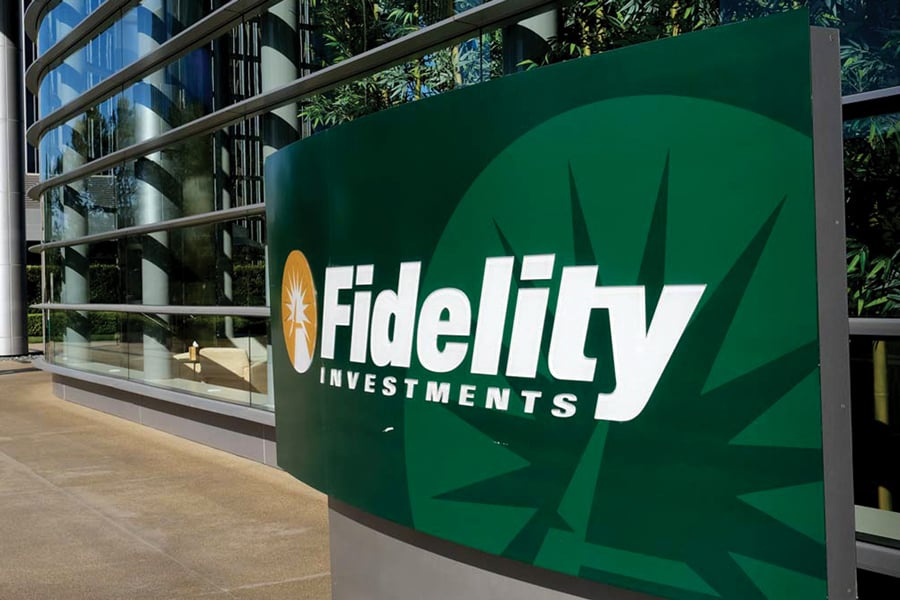

If the fledgling semitransparent ETF market needed a boost it got one this week when Fidelity Investments filed to launch an ETF version of its legendary $21.7 billion Magellan Fund (FMAGX).
The filing with the Securities and Exchange Commission, which also includes growth opportunities, real estate and small-cap opportunities versions of the new ETF wrapper, follows the Boston asset manager’s semitransparent debut with three funds in June.
Since the first semitransparent ETF, launched in April by American Century, the market has so far expanded to 15 funds from six different asset managers.
The funds combine for just over $570 million in total assets, $365 million of which is in four American Century funds, including $193 million in Focused Dynamic Growth (FDG).
Fidelity’s three funds launched in June have $107 million in combined assets.
A Fidelity spokeswoman cited the preliminary registration status of the new funds as a reason for declining comment for this story.
But the latest filing is viewed as an indication that the asset management industry is still banking heavily on financial advisers, as the largest purchasers of ETFs, embracing the semitransparent model.
“With Fidelity, T. Rowe Price and other asset managers proving that the semitransparent ETF structure works, we would expect more asset managers to see the opportunities to tap into the nearly $5 trillion ETF market and the fast growing active-ETF universe without the risk of front running of their best ideas,” said Todd Rosenbluth, director of mutual fund and ETF research at CFRA.
“The semitransparent nature of these products allows fund managers to build or reduce positions with delayed disclosure,” he added. “However, demand for these ETFs has been limited thus far and thus far has not cannibalized the existing mutual fund businesses of these products.”
The basic semitransparent ETF structure puts an ETF wrapper around an actively managed strategy without disclosing the underlying holdings on a daily basis, as all other ETFs are required to do. The funds instead disclose holdings on a quarterly basis, like mutual funds.
While the asset management industry continues to file and launch semitransparent ETFs, there is no denying that the success of these products depends heavily on independent financial advisers getting on board.
“The hard part is availability, but this is how ETFs launch and it takes time,” said Ed Rosenberg, senior vice president and head of ETFs at American Century.
“You have to launch them and get people to notice them, and then slowly work your way onto all the different platforms,” he added.
According to Rosenberg, the four American Century funds are currently on “all the RIA platforms,” but he also sees distribution potential with placement on regional and independent broker-dealers, as well as the wirehouse platforms.
“The more places you can go and be available the more conversations you can have,” he said. “I do think the advisers are warming to them. Some advisers want to get out of mutual funds with a certain portion of their book and there’s an outlet for them now.”
Rosenberg’s optimism is illustrated by the fact American Century has been waiting since early this year for the SEC to approve an international version of the semitransparent ETF wrapper.
“If we had to wait 12 to 14 years for the first semitransparent ETFs, I think we can wait 12 months to get the next phase out the door,” he said.
T. Rowe Price is also putting on a happy face regarding its debut into not only the semitransparent ETF market but its debut into ETFs. “We’re happy with what we’ve seen so far; we’re looking at this as a long-term strategic initiative,” said Tim Coyne, T. Rowe’s head of ETFs.
T. Rowe launched four semitransparent ETFs on August 6, which have grown to a combined $76 million.
“With anything new in terms of a new product structure and a new asset class, typically it does take some time,” Coyne said. “We’re committed to educating our investors. It’s a really positive result for investors because we’re providing them with additional choices for accessing our investment management.”

The leadership changes coming in June, which also include wealth management and digital unit heads, come as the firm pushes to offer more comprehensive services.

Strategist sees relatively little risk of the university losing its tax-exempt status, which could pose opportunity for investors with a "longer time horizon."

As the next generation of investors take their turn, advisors have to strike a fine balance between embracing new technology and building human connections.

IFG works with 550 producing advisors and generates about $325 million in annual revenue, said Dave Fischer, the company's co-founder and chief marketing officer.

Five new RIAs are joining the industry coalition promoting firm-level impact across workforce, client, community and environmental goals.
RIAs face rising regulatory pressure in 2025. Forward-looking firms are responding with embedded technology, not more paperwork.
As inheritances are set to reshape client portfolios and next-gen heirs demand digital-first experiences, firms are retooling their wealth tech stacks and succession models in real time.
